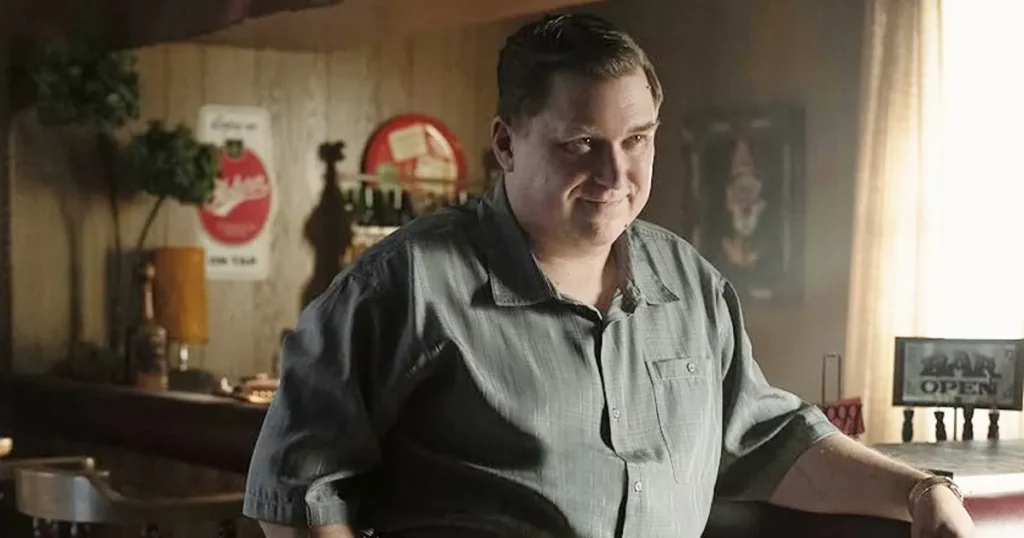The Haunting Reality of “Devil in Disguise: John Wayne Gacy”
As October winds down and Halloween approaches, true crime enthusiasts are turning to Peacock’s new drama series, “Devil in Disguise: John Wayne Gacy,” for their seasonal frights. Unlike fictional horror, this show delves into the terrifying reality of one of America’s most notorious serial killers. Starring Michael Chernus of “Severance” fame as Gacy, the series meticulously examines the chilling double life led by a man who balanced community respectability with unimaginable brutality. The show stands out as one of the most disturbing viewing experiences of 2025, precisely because its horrors are drawn from actual events that shocked a nation and forever changed the lives of countless families in suburban Chicago.
The series focuses on Gacy’s reign of terror between 1972 and 1978, during which he murdered at least thirty-three young men and boys in Norwood Park Township near Chicago. What makes Gacy’s case particularly unsettling is how effectively he maintained his public persona—performing as a clown at community events, helping neighbors with household tasks, and cultivating relationships with local police and politicians. This carefully crafted façade allowed him to commit atrocities within his own home, burying most of his victims in a crawlspace beneath his house. The show excels in portraying this jarring dichotomy between Gacy’s outward persona and inner depravity, illustrating how a killer could operate in plain sight for years while an unsuspecting community continued their daily lives just steps away from where victims lay buried.
Where “Devil in Disguise” truly distinguishes itself from other true crime adaptations is its compassionate focus on the victims. Unlike recent productions such as “Monster: The Ed Gein Story,” which faced criticism for seemingly glorifying its subject, this series deliberately shifts the spotlight to the lives that were cut short by Gacy’s actions. Each victim is portrayed with dignity and dimension—they aren’t merely statistics or plot devices, but real people with dreams, relationships, and futures that were violently taken from them. The show dedicates significant screen time to exploring who these young men were before they encountered Gacy, humanizing them beyond their tragic endings and allowing viewers to feel the true weight of their loss. This approach transforms what could have been exploitative content into a thoughtful meditation on grief and remembrance.
The psychological aftermath of Gacy’s crimes forms another powerful thread throughout the series. Rather than dwelling on the graphic details of the murders themselves, the show explores the ripple effects that spread outward from each killing—parents who never stopped searching for answers, siblings who lived with unanswerable questions for decades, and communities forever changed by proximity to evil. Viewers witness the crushing weight of uncertainty as families report their loved ones missing, only to face institutional indifference or dismissal. The show doesn’t flinch from depicting the long shadow cast by Gacy’s actions, following the survivors and family members as they struggle to rebuild lives shattered by senseless violence. This commitment to showing the full emotional cost of these crimes elevates the series beyond typical true crime fare.
Perhaps the most damning aspect of the narrative is how it exposes the systemic failures that enabled Gacy’s prolonged killing spree. The series unflinchingly portrays how homophobia within the Chicago Police Department led investigators to dismiss crucial leads when victims were gay or involved in sex work. It shows how Gacy’s status as a white business owner with community connections shielded him from serious scrutiny, even as evidence mounted. The show draws clear connections between these institutional biases and Gacy’s ability to continue finding victims, suggesting that many deaths might have been prevented had authorities taken early reports more seriously. This social critique adds a layer of urgency to the storytelling, making it clear that the horror of Gacy’s crimes was compounded by the failure of systems designed to protect the vulnerable.
“Devil in Disguise: John Wayne Gacy” also explores the uncomfortable aftermath of such high-profile cases, where various parties profit from tragedy while victims’ families continue to suffer. The series shows how lawyers built careers on the case, how law enforcement officers transformed into media personalities, and how publishers rushed out books—all while the families of the murdered young men struggled with unresolved grief and trauma. This examination of the “true crime industry” feels particularly relevant in today’s media landscape, where real tragedies are increasingly packaged as entertainment. By highlighting these ethical dimensions, the show encourages viewers to consider their own consumption of such content and what responsibilities we all share in how victims’ stories are told. For those seeking thoughtful, respectful true crime content this Halloween season, “Devil in Disguise: John Wayne Gacy” offers a haunting but ultimately humanizing look at one of America’s darkest chapters, streaming now on Peacock.


